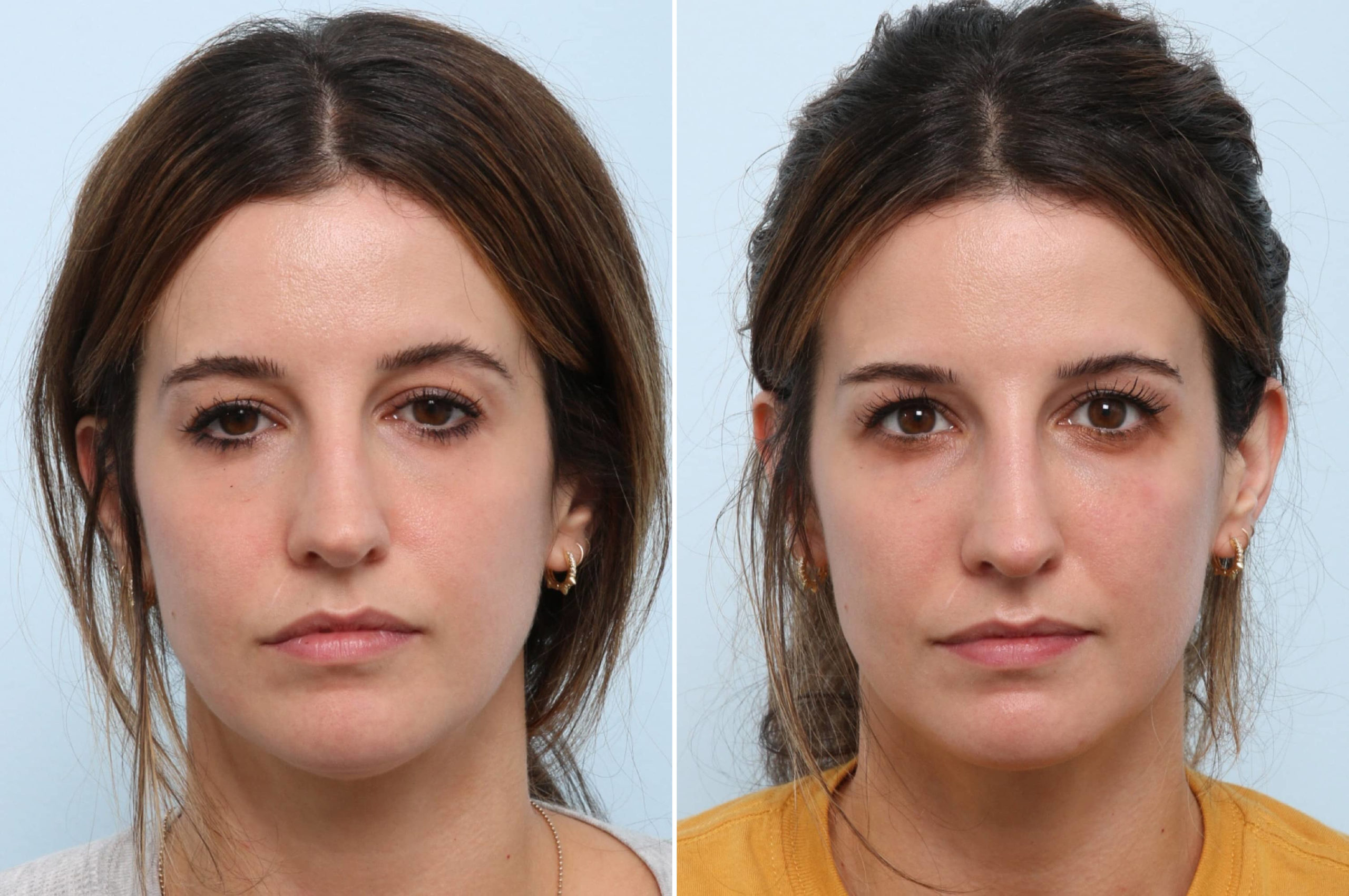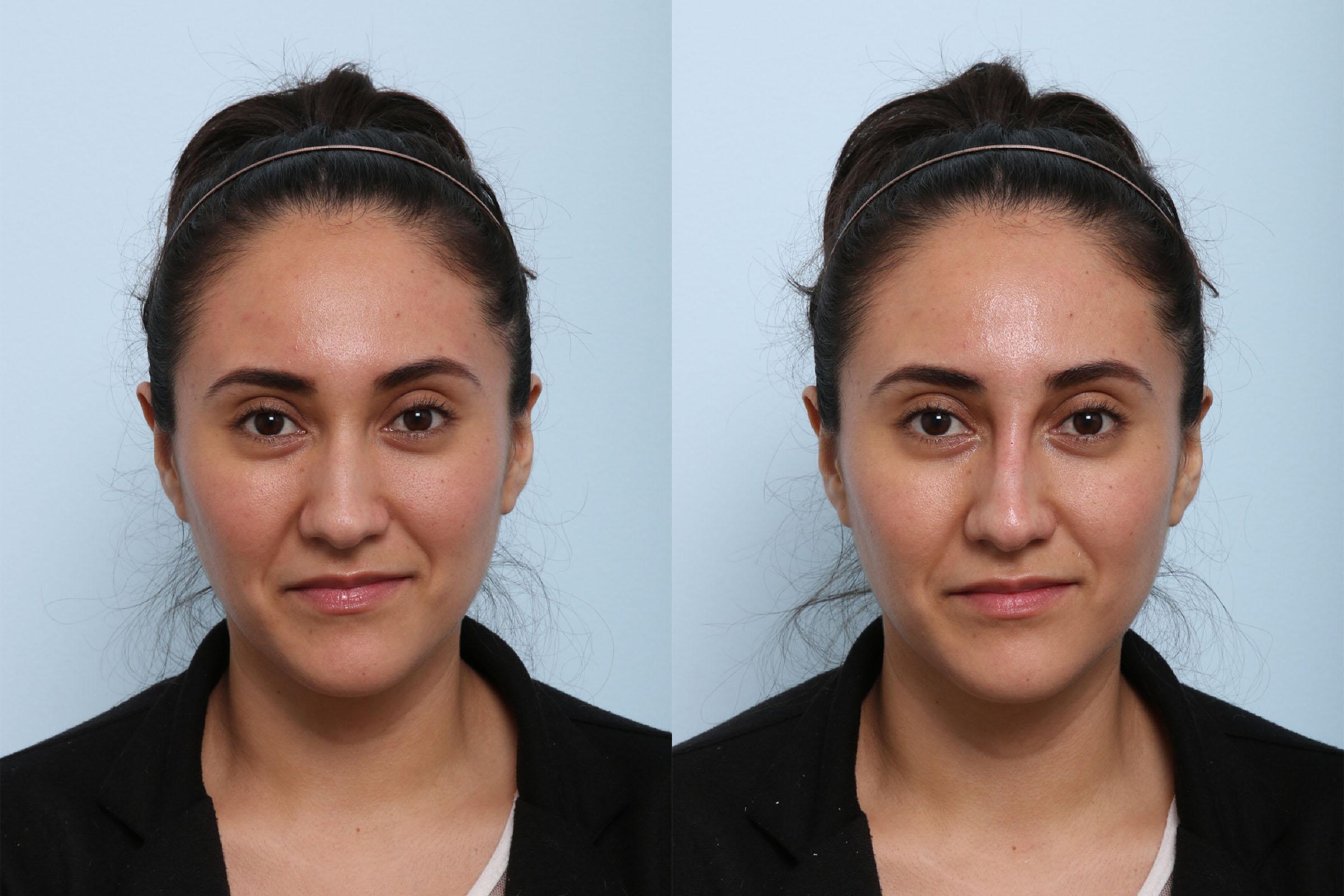Rhinoplasty surgery can be done in a variety of ways. A rhinoplasty is a procedure that alters the form of the nose’s outside (cosmetic rhinoplasty) and its internal channels (called a functional rhinoplasty). It is one of the most popular cosmetic procedures in the United States.
Rhinoplasty surgery can assist with the following issues:
- The relationship between nose size and facial balance
- The size and positioning of the nostrils, or the breadth of the nose at the bridge
- Nasal tip that is enlarged, bulbous, drooping, upturned, or hooked
- Nostrils that are large, broad, or upturned
- Asymmetry of the nose

Functional rhinoplasties target structural issues affecting the nose’s airflow passageways to improve breathing. They’re frequently used in conjunction with septoplasty. These functional operations have the side benefit of improving nose aesthetics.
There are two kinds of nose reshaping surgeries:
- Open (external) rhinoplasty – The horizontal incision used in an open rhinoplasty permits the skin to be elevated to examine better and approach the nose tip cartilage. The advantage of open (external) rhinoplasty is that some nasal components may be accessed more easily. On the negative side, there is a minor exterior incision and the possibility of mild scarring. An open rhinoplasty allows the surgeon to see the cartilage and other structures within the nose more clearly than a shut rhinoplasty. They can also make modifications with some more precision and efficiency. Some alterations are only possible with an open rhinoplasty operation.
- Closed (internal) rhinoplasty. A concealed rhinoplasty involves no exterior incisions and is performed totally within the nose. This treatment necessitates higher technical expertise and higher propensity than the outpatient wound. You should always choose the best rhinoplasty surgeon for such sensitive surgery. Closed rhinoplasty offers the advantages of taking less time in the operating room, having less edema, and recovering faster. On the exterior of the nose, there is likewise no scar. The downsides of the transparent rhinoplasty approach include a lack of access to the structure and reduced direct visibility.
In a nutshell, open rhinoplasty refers to a surgical procedure in which an exterior incision is created between two nostrils. All surgeries in a shuttered rhinoplasty are performed within the nasal cartilage.
A surgeon’s approach for a specific patient is a question of personal taste and expertise.
Plastic surgeons have utilized both open and closed treatments for decades.Open rhinoplasty is typically used for more challenging surgeries such as cleft-lip rhinoplasty and significantly deviated nasal structures. Treatment of a bulbous tip, drooping, pinched, or projecting tip are some of the most common treatments for which doctors and dentists may opt for open rhinoplasty. Closed rhinoplasty is commonly used for minor alterations that do not require the total connection and sight offered by an opening outside the nose.
All surgeries in closed rhinoplasty, also known as transconjunctival rhinoplasty, are made within the nose. The whole procedure is carried out through small holes in the nose. Because of the limited surgical access, the plastic surgeon has significant hurdles and certain technological limits. This is especially true for more complicated rhinoplasty operations.

If your surgeon chooses an open rhinoplasty treatment and you’re worried about scars, get before and after photos.
The surgeon’s competence and experience are the most significant factors to consider when determining whether to do a closed and open rhinoplasty. As a patient, you must select a plastic surgeon you appreciate and have faith in. Next, the surgeon will choose the best course of action for your specific scenario. If you follow their advice, the outcomes of your rhinoplasty treatment will almost certainly be satisfactory.

